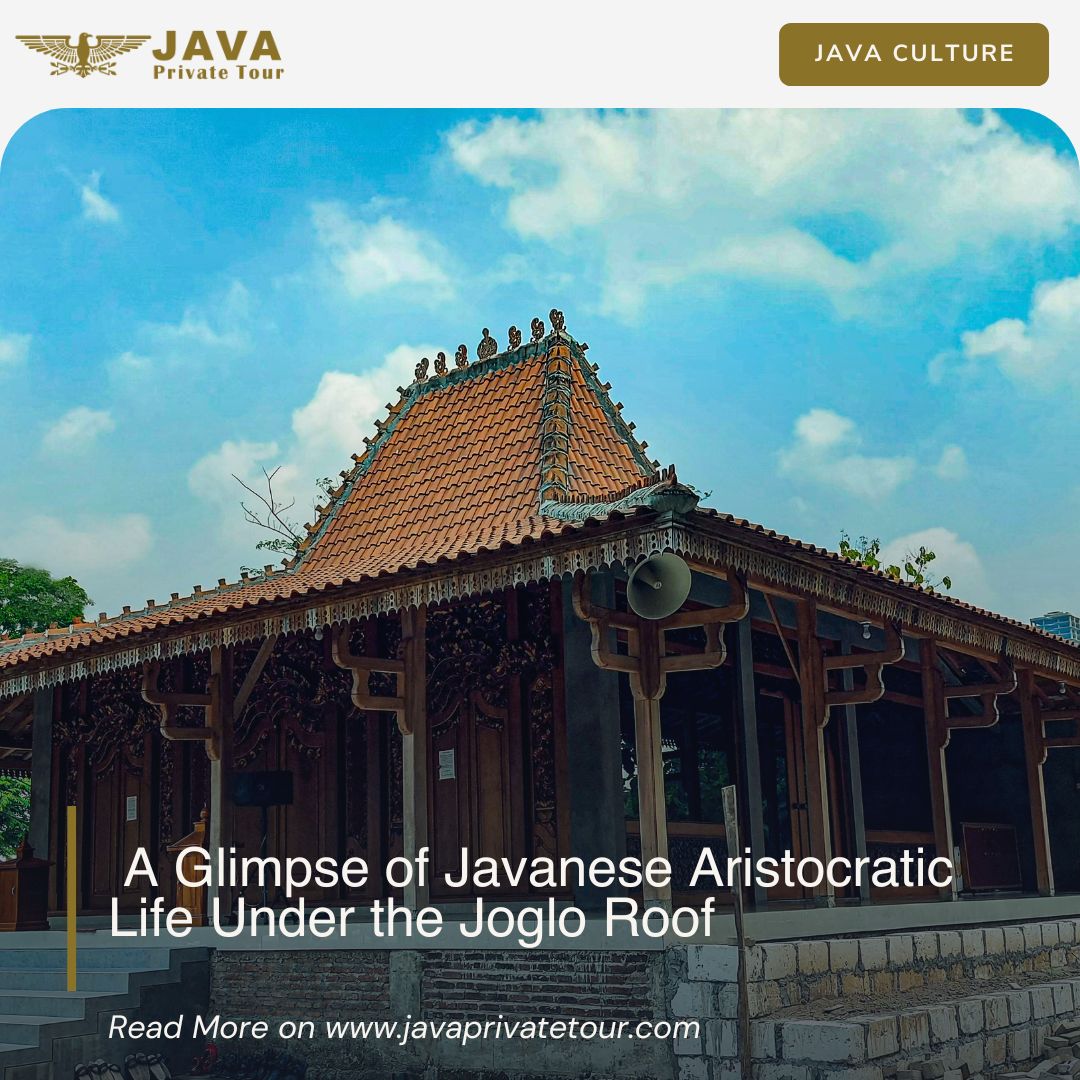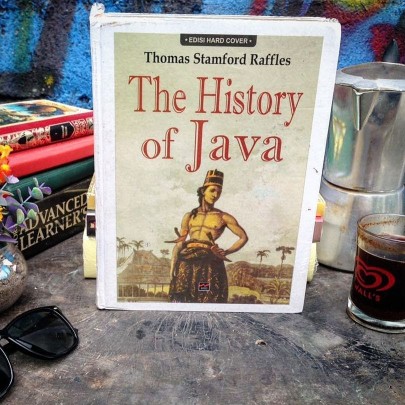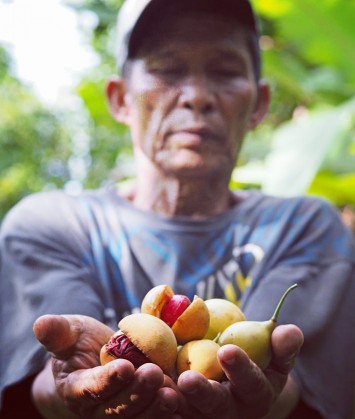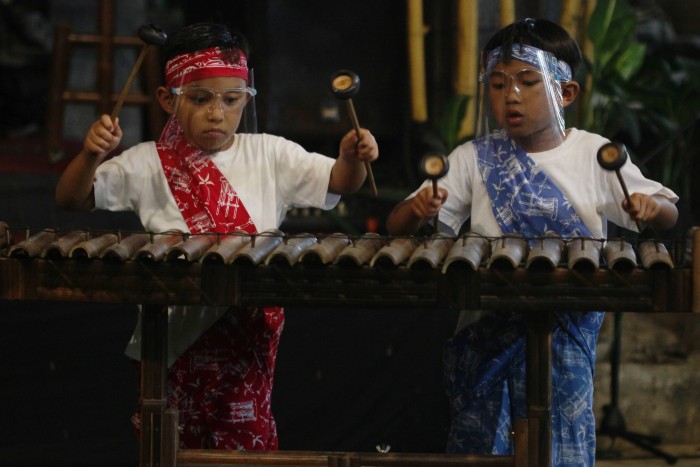javaprivatetour.com – When stepping into the cultural heartland of Yogyakarta, Surakarta, or any other corner of Java, one cannot help but encounter the iconic Joglo houses scattered across the landscape. These traditional structures bear significant historical value, particularly within the aristocratic circles of Javanese society.
In her thesis for Universitas Sebelas Maret Surakarta titled “Budaya Priyayi Baru” (New Priyayi Culture – A Study of the New Priyayi Lifestyle in Societeit Harmonie Surakarta 1920-1930), Desi Khanifah Narwati notes that the Joglo is traditionally inhabited by the aristocratic priyayi families, akin to a regal abode for the elite.

The Joglo, resembling the Javanese Muslim kings’ kraton (palace), albeit on a smaller scale, serves as the abode for Javanese aristocrats beneath its ornate roof. The eminent Professor Slamet Subiyantoro, from the Department of Fine Arts at Universitas Sebelas Maret Surakarta, emphasizes that the Joglo reflects the attitudes, insights, and socio-economic-cultural levels of its inhabitants.
In his journal article “Rumah Tradisional Joglo dalam Estetika Tradisi Jawa” (Traditional Joglo House in Javanese Tradition Aesthetics), Slamet articulates the Javanese traditional principles, highlighting the reflective nature of Joglo concerning the lifestyles of its occupants.
In locales like Kudus, the Joglo is regarded as a symbol of power and superiority for Javanese aristocrats. Those residing beneath its distinctive roof are seen as socially elevated compared to mere merchants.
According to Ashadi, in his article “Jejak Keberadaan Rumah Tradisional Kudus: Sebuah Kajian Antropologi—Arsitektur dan Sejarah” (Traces of Traditional Houses in Kudus: An Anthropological, Architectural, and Historical Study), the carvings on the Joglo depict symbols of victory and pride, showcasing wealth through intricate designs adorning the house’s gebyok (partition).

Slamet further describes the Joglo as ‘tikelan’ (broken) due to its roof appearing as if broken into three parts: brunjung, penanggap, and panitih. Within these sections, one finds pendapha, pringgitan, dalem, dapur, gandhok, and gadri.
The vertical arrangement of the Joglo is divided into three parts: roof, pillars or walls, and the bottom or ompak. This arrangement symbolizes the transcendence of worlds – the upper world (deities), the middle world (life), and the lower world (death), as explained by Slamet.
Pendapha, illustrated as an image, holds a central place in Javanese tradition, serving as a locus for self-control, deemed as wisdom (kewicaksanan) among the priyayi.
Sartono Kartodirdjo, echoing similar sentiments, describes the pendapha of Joglo as orderly, harmonious, and stable (cosmic). The philosophical structure of pendapha reflects the meeting between priyayi and their abdi dalem (servants).
Despite the contemporary perception that Joglo houses might be losing their significance, their historical value attests to their grandeur in the bygone era.
Thinking of Exploring Javanese Heritage? Choose Java Private Tour for a Personalized Experience!
In the midst of discovering the rich cultural tapestry of Javanese aristocratic dwellings, consider Java Private Tour as your trusted companion. Offering not just knowledgeable English-speaking guides but also flexibility in scheduling, Java Private Tour ensures a personalized journey tailored to your preferences.
Our professional and licensed team, including guides and drivers, guarantee a seamless exploration of Java’s cultural gems. From certified local guides to a fleet of private vehicles, including sedans, vans, and tourist buses, Java Private Tour has it all.
Endorsed by various embassies who have experienced and appreciated our services, Java Private Tour stands out as the go-to choice for foreign tourists embarking on their first visit to Java, Indonesia. Let us be your benchmark and recommendation for an unforgettable cultural adventure.
BOOK HERE to start your Javanese escapade today!
You May Also Like
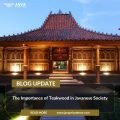 The Importance of Teakwood in Javanese Society
The Importance of Teakwood in Javanese Society
 Bantargebang Landfill: A Glimpse into the Dark Side of Jakarta’s Waste Management
Bantargebang Landfill: A Glimpse into the Dark Side of Jakarta’s Waste Management
 Sex Education in Javanese Culture: The Gowok Tradition
Sex Education in Javanese Culture: The Gowok Tradition
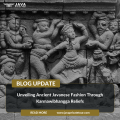 Unveiling Ancient Javanese Fashion Through Karmawibhangga Reliefs
Unveiling Ancient Javanese Fashion Through Karmawibhangga Reliefs
 Exploring Java’s Charm: Warung Angkringan as a Public Expression Space in Javanese Society
Exploring Java’s Charm: Warung Angkringan as a Public Expression Space in Javanese Society

